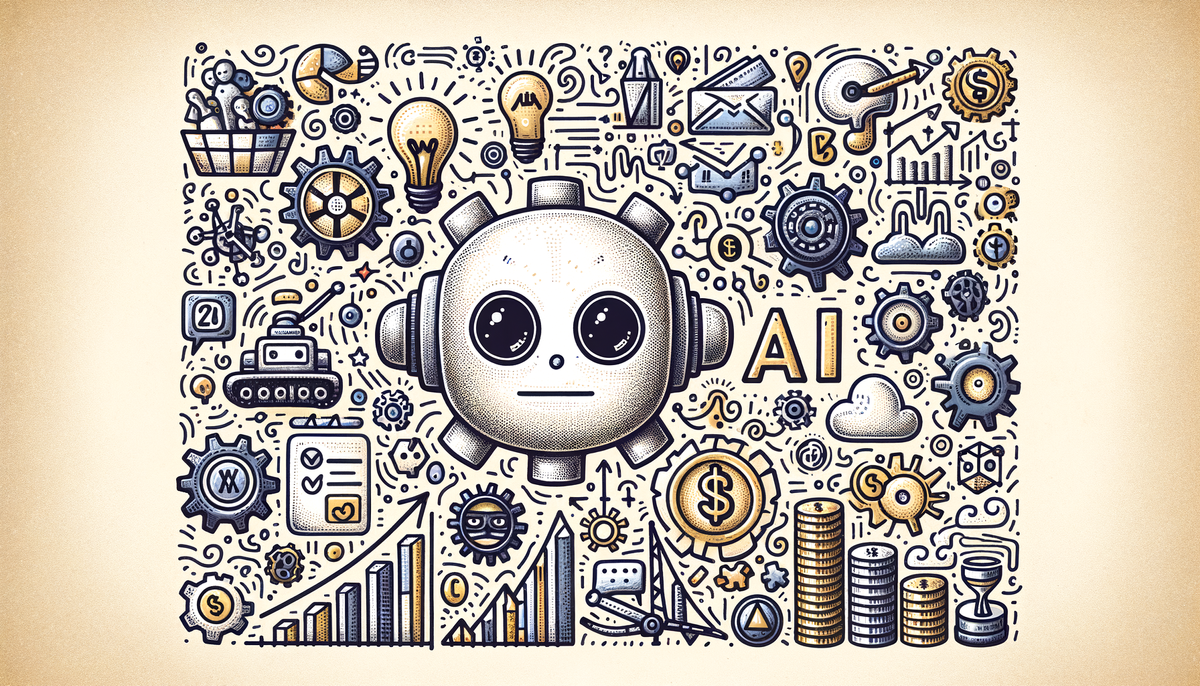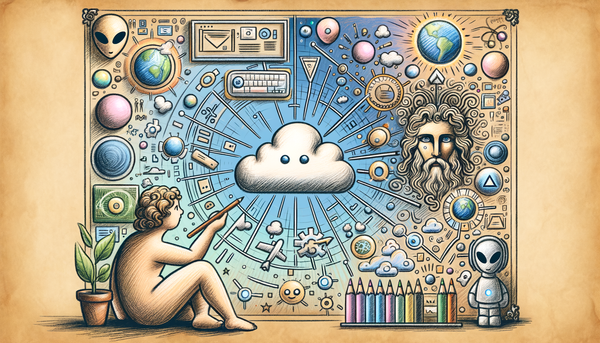Shock and Awe in the AI Landscape

The surge in AI-driven innovation is reshaping entire industries—from the rapid emergence of unicorn startups to radical transformations in construction and energy—while also sparking urgent debates over wealth equality and its socio-economic implications.
AI and the Wealth Divide: Opportunities and Challenges
Recent discussions around AI reveal a dual-edged sword. On one side, AI is positioned as a powerful engine for productivity and exponential economic growth. Businesses that harness quick, data-driven decision making and automated operations leap ahead, accruing significant profits in the process. However, as AI becomes the primary driver of wealth creation, it also intensifies the gap between those with the skill and resources to adopt state-of-the-art technology and those without.
Experts note that the transformative potential of AI is undeniable. For instance, many leading global companies continue to invest heavily in advanced AI systems that promise to streamline operations across multiple sectors. Yet, there is growing concern about whether these gains will be equitably shared. As research indicates, workers who have not yet had the opportunity to reskill or engage with AI-integrated processes risk obsolescence—leading to a polarized landscape where the benefits of innovation accumulate in the hands of an elite few.
This challenge calls for a deliberative approach towards policy-making that encourages equitable access to AI resources. It is essential for governments and industry leaders to collaborate on developing strategies that not only fuel innovation but also create safety nets for those potentially sidelined by rapid technological advancement. By instituting robust upskilling programs and targeted financial support, the innovative thrust that AI brings could be harmonized with social progress.
"Artificial intelligence offers tremendous potential, but we must ensure it’s developed with a sense of responsibility to avoid misuse." — Warren Buffett
For those interested in a broader discussion on technology and its societal impacts, you can explore further insights in our coverage of the dynamic landscape of AI on AI.Biz.
The Rise of AI-Driven Unicorns: Fueling a Startup Boom
The rapid acceleration of AI innovation is vividly illustrated by the explosion of new unicorns in the startup ecosystem. In 2024, the U.S. saw a marked increase in billion-dollar startups, propelled significantly by AI-focused ventures. With major players like Elon Musk’s xAI achieving a staggering valuation and a plethora of entrants innovating in fintech, biotech, and immersive technology, the entrepreneurial scene is an emergent powerhouse of creativity and disruption.
In stark contrast to the traditional pace of business evolution, these ventures are predominantly young, frequently less than five years old, underscoring the speed at which AI is rewriting the rules of entrepreneurship. This phenomenal surge dovetails with a more general trend: AI's capacity to simplify complex processes, reduce operational inefficiencies, and uncover uncharted market potential.
The surge in unicorns not only solidifies AI’s role as the backbone of modern industry but also raises critical questions about market saturation and long-term sustainability. For those who follow startup dynamics, our article on trials and triumphs of AI in the modern world provides deeper insights into how these innovations are influencing consumer markets and investor confidence.
Revolutionizing Construction: The New Frontier of AI Integration
The construction sector, long known for its reliance on traditional methodologies, is now experiencing a renaissance thanks to AI. Trailblazer Lilian Ho, spearheading a new Master's program in AI for Architecture & Construction at the ZIGURAT Institute of Technology, emphasizes that the infusion of AI into construction is not simply about enhancing existing processes—it represents a complete paradigm shift.
The evolution began with the advent of technologies such as Computer-Aided Design (CAD) and Building Information Modeling (BIM), but AI is poised to take this transformation further by enabling generative design and advancing smart city initiatives. Architects and engineers now have access to unprecedented data and analytics, which facilitates not only more efficient design practices but also innovative approaches to sustainability and urban planning.
Imagine designing a building where every facet—from energy consumption to structural integrity—is optimized based on real-time data analytics. With AI, such futuristic designs are no longer the stuff of science fiction but are quickly becoming a reality. For professionals eager to master these innovations, it is imperative to stay ahead, as the industry demands a new breed of tech-savvy construction leaders.
This transformational journey in construction demonstrates that the potential of AI is not confined to office work or digital applications—it is fundamentally reshaping how we build our physical world.
Accelerating AI Adoption: From Moderate Beginnings to Explosive Growth
Despite the enormous potential of artificial intelligence, adoption rates in some sectors appear modest at first glance. However, caution is advised against underestimating the latent demand. Certain technology leaders are on the brink of experiencing a dramatic surge in AI adoption over the coming decade, which can fundamentally alter competitive dynamics across industries.
Organizations across the board have started to acknowledge that integrating advanced AI applications is critical to securing a competitive edge. When companies make early strategic investments in AI-powered solutions, they position themselves to unlock levels of operational efficiency and innovation that are difficult to achieve otherwise. The narrative here is one of cautious optimism mixed with an imperative to act swiftly—innovation waits for no one.
This trend illustrates a broader phenomenon where industries that once exhibited tepid engagement with AI are now gearing up for rapid transformation. By examining market forecasts and technological roadmaps, industry watchers suggest that the next decade could indeed see unprecedented integration of AI into the fabric of everyday business processes.
For additional perspectives on the future trajectory of AI integration, you might find our exploration at Constellations of AI Innovation quite enlightening.
Securing Digital Lives: The Subtle Integration of AI in Everyday Tools
Beyond large-scale industrial transformations, the influence of AI is reaching into everyday technology, enhancing security and user experience in ways that were unimaginable just a few years ago. A prime example of this can be observed in the latest developments in Windows 11, where a new pop-up notification is being tested. This small but significant feature is designed to enhance account security by prompting users to set up recovery options if they haven’t already done so.
While some users may initially perceive such interventions as intrusive, their underlying purpose is clear: in a digital landscape increasingly fraught with security threats, proactive measures are essential. The reminder to link secondary contact information acts as a form of digital insurance against potential breaches—a crucial safeguard in an era where data is one of the most valuable commodities.
This initiative further exemplifies how AI can be integrated into user interface design to create more secure and resilient systems without the need for drastic changes to overall user experience. The strategy here is not to overwhelm the user, but to gently guide them towards practices that fortify their digital presence.
AI in Energy: Lighting the Path Towards a Sustainable Future
At the crossroads of technological innovation and environmental stewardship lies the energy sector, where AI is emerging as both a tool and a catalyst for change. During CERAWeek Global, Constellation Energy's CEO Joseph Dominguez articulated how partnerships—most notably with tech giants like Microsoft—are paving the way for a resurgence in energy innovation. Their ambitious endeavors, including the relaunch of a reactor at Three Mile Island, underscore the urgency to adapt to both rising energy demands and stringent regulatory environments.
The discourse in the energy sector highlights a broader theme: leveraging AI to create sustainable and efficient solutions. AI’s capabilities in predictive analytics and real-time monitoring are being harnessed to optimize everything from power generation to distribution, thereby reducing waste and minimizing environmental impact. As global energy demands evolve with new technological imperatives, the integration of AI is set to play a pivotal role in shaping a cleaner, more resilient energy landscape.
By focusing on energy efficiency and smart grid management, AI not only boosts operational performance but also lays the groundwork for innovative technologies that could redefine conventional energy production methods. In many respects, the journey of AI in the energy sector mirrors the broader transformation in technology: it is an essential ingredient in the recipe for a sustainable future.
The Decline of the Gadget Boom: A Shift in Industry Paradigms
In contrast to the otherwise buoyant narrative of AI-driven growth, there is a somber note from the world of consumer electronics. As the initial fervor around new tech gadgets wanes, industry insiders describe the current environment as a "bloodbath"—a stark reminder that not all technological trends evolve uniformly. With investors and manufacturers buckling under the weight of unmet expectations, the gadget sector now finds itself facing fierce competition within a market saturated with AI-augmented innovations.
The decline in consumer enthusiasm for traditional gadgets underscores an important shift in focus: while early AI applications spurred excitement in both established and emerging tech trends, the novelty of AI-infused devices is gradually giving way to a more discerning market. Today, the measure of success isn’t just about introducing the next flashy gadget but about embedding AI in ways that deliver tangible long-term benefits.
This evolution is a call to action for companies entrenched in the traditional tech paradigms to pivot quickly. The need for innovation is now coupled with a demand for reliable, value-driven solutions that resonate with a tech-savvy audience aware of both technological promises and pitfalls.
"AI will not destroy us. It will, however, expose who we truly are." — Reid Hoffman
This reflective insight serves as a potent reminder of the transformative power of AI—a force that challenges established norms and compels industries to continuously reinvent themselves. For further context on current technology trends and disruptive market changes, our analysis on the emergence of AI in diverse sectors sheds additional light on these significant shifts.
Looking Ahead: The Future in an AI-Dominated Landscape
The narrative woven by these diverse developments in AI underpins a common theme: rapid change is inevitable. Across wealth distribution, startup ecosystems, construction innovations, energy sustainability, and even everyday digital security, the transformative impact of AI is unmistakable. The challenge for both industry leaders and policymakers is to navigate these changes in a manner that balances growth with responsibility.
We often find ourselves at the intersection of technological promise and economic reality. Embracing AI can catalyze unprecedented advancements, yet each stride forward must be measured against its broader social impact. By fostering collaboration across sectors—linking academia, government, and industry—there is an opportunity to craft a future where AI works for everyone.
History offers valuable lessons from past technological revolutions. Just as the industrial revolution redefined societies centuries ago, today’s AI revolution holds the capacity to reshape the world, provided its benefits are distributed equitably. Taking proactive steps towards inclusive growth, and ensuring that the emerging techno-elite does not stand isolated from society’s broader progress, is paramount.
As I reflect on the evolution of AI, I remember the profound impact of embracing risk and innovation while remaining mindful of its societal implications. The future of AI is not set in stone; it is an ever-evolving dialogue between technology and humanity—one that demands creative thought, ethical considerations, and relentless curiosity.
Further Readings
- How will artificial intelligence affect wealth equality? - Phys.org
- Rise Of AI Drives US Growth In New Unicorns - Crunchbase News
- AI is Revolutionizing Construction – 'Now’s the Time to Lead the Change,' Says Pioneer Lilian Ho - ArchDaily
- Artificial Intelligence (AI) Adoption Rates Appear low, but This Technology Leader Could See a Massive Surge in Demand in the Next 10 Years. Here's Why. - The Motley Fool
- Shock, horror – I’m not going to argue with Microsoft’s latest bit of nagging in Windows 11 - TechRadar
- Constellation Energy CEO talks AI, deals, and regulation - Yahoo Finance
- Gadget Boom Fizzles Amid AI Hoopla: ‘It’s a Bloodbath Out There’ - Bloomberg





